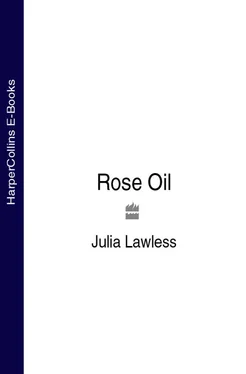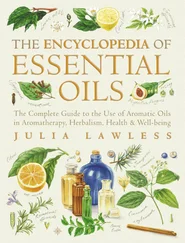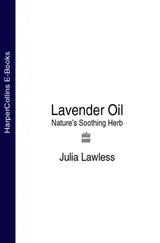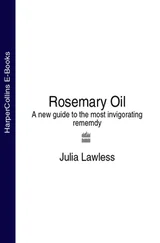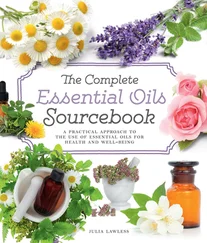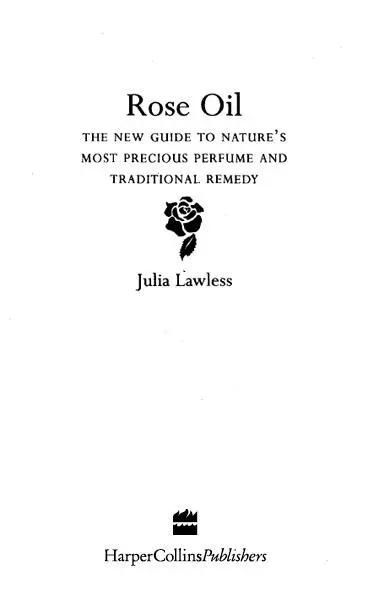
Thorsons
An Imprint of HarperCollins Publishers
77–85 Fulham Palace Road,
Hammersmith, London W6 8JB
www.harpercollins.co.uk
Published by Thorsons 1995
Copyright © Julia Lawless 1995
A catalogue record for this book is available from the British Library
Julia Lawless asserts the moral right to be identified as the author of this work
All rights reserved under International and Pan–American Copyright Conventions. By payment of the required fees, you have been granted the nonexclusive, nontransferable right to access and read the text of this e–book on-screen. No part of this text may be reproduced, transmitted, downloaded, decompiled, reverse–engineered, or stored in or introduced into any information storage and retrieval system, in any form or by any means, whether electronic or mechanical, now known or hereinafter invented, without the express written permission of HarperCollins e–books.
HarperCollins Publishers has made every reasonable effort to ensure that any picture content and written content in this ebook has been included or removed in accordance with the contractual and technological constraints in operation at the time of publication.
Source ISBN 9780722531730
Ebook Edition ©JULY 2014 ISBN: 9780008106188
Version: 2014-08-26
To ‘Didi’
Cover
Title Page
Copyright
Dedication
Rose Oil – An Introduction
Part I: A Medical and Historical Background
1 Legend, Myth and Symbolism
2 The Traditional Medicinal Uses of the Rose
3 The Rose as a Twentieth-Century Remedy
4 Cultivation, Production and Quality Control
5 A Summary of the Properties and Applications of Rose Oil
6 Methods of Use, Safety Data and Storage Precautions
Part II: A – Z of Health and Beauty Applications:
acne/blemished skin; ageing/mature skin; amenorrhoea (absent periods); anorexia/loss of appetite; anxiety; asthma; blepharitis; bruises; children; cold sores; conjunctivitis/ophthalmia; cuts and wounds; depression; dermatitis and eczema; dry/cracked skin; dysmenorrhoea (painful periods); faintness and dizziness; haemorrhoids; hangover; hay fever; headaches; heat rash; high blood-pressure; immune system (to strengthen); infectious illness; insomnia; leucorrhoea and pruritis; menopausal problems; menorrhagia (heavy periods); menstruation problems; migraine; mouth ulcers; palpitations; perfume uses; perspiration (excessive); pregnancy and childbirth; premenstrual tension (PMT); scars; sensitive skin; sexual problems; skin care; stress; thread veins; varicose veins
Keep Reading
Appendix A: Different Types of Rose Species
Appendix B: Comparative Constituents of Rose Oil
References
Bibliography
Useful Addresses
Acknowledgements
Other Books By
About the Publisher
Rose Oil: An Introduction
Oh, no man knows
Through what wild centuries
Roves back the rose.
Walter de la Mare, All That’s Past
When did the passion for the rose begin? Fossil studies have shown that wild roses were already blooming 40 million years ago! Simple rose images have been identified on murals and in sculptural relief forms dating from the earliest historical times. The oldest of these is depicted on the wall of the excavated Palace of Knossos in Crete, believed to be more than 4,000 years old. A rose is also stamped on one of the oldest coins which has been unearthed, a 2000 BC Hittite artefact. However, these ancient specimens are difficult to identify with botanical accuracy because of the basic nature of the design.
No such doubt exists, however, with respect to a wreath of five-petalled flowers which was discovered in an Egyptian tomb (circa AD 26) by British archaeologist Sir Flinders Petrie in 1888:
In the dry desert air, the wreath’s petals had shrivelled, but they still kept their colour, and when placed in warm water, the blossoms seemed to come back to life. Buds swelled, and the pink petals spread, unfolding to reveal the knot of golden threads at the centre just as they must have been on the morning of the funeral. A botanist at Cambridge had little trouble in identifying Petrie’s flowers as roses, specimens of ‘Rosa richardii’ (R. sancta), a species already known as ‘the Holy Rose of Abyssinia’ because at that time it was still a fixture of the Coptic Christian churchyards in that country . 1
Similar remains have also been found in graves throughout Middle Egypt, together with frescoes and scraps of fabric portraying simple roses with five petals. It is significant that the rose was one of the flowers sacred to the Egyptian Goddess Isis, guardian of love and destiny, who has been worshipped for more than 5,000 years! Signs of an ancient rose cult have also been found in India and in Syria – even the name Syria comes from the word ‘suri’, meaning ‘land of roses’. The ‘Holy Rose’ still grows in Egypt today, and can also be found in remote areas of Northern Ethiopia (the former Abyssinia). In 1920, a monk reported finding a rose growing in an Ethiopian mountain village at an altitude of 8,000 feet!
Trade in roses also became established at a very early stage in history. The royal groves of Ur in the Euphrates–Tigris region have revealed that the Sumerian King Sargon (2648–2630 BC) returned from a campaign bringing ‘vines, figs and roses’. Caravans wandered from the rivers of Babylonia, taking their cargo with them right across Egypt to North Africa. Arab nomads played a vital role in the distribution of the rose not only throughout the Middle East, but also later by bringing it to Europe.
Botanically speaking, however, it is difficult to locate the exact origin of the first wild rose because the early records are far from complete. What is clear is that from very early times there existed several distinct species of rose which were distributed throughout the northern hemisphere, having two main centres – one in Central Asia and the other in Western Europe. These became known as the ‘Old’ rose varieties because they formed the basis of all the subsequent hybrids, or ‘New’ roses.
The historical division between ‘Old’ and ‘New’ roses is generally taken to be the year 1800, due to the influence of France’s Empress Josephine. From 1808 and 1814 the Empress, wife of Napoleon Bonaparte, established a rose garden at Malmaison (outside Paris) which was unsurpassed. She obtained all the known roses of the time, including the newly arrived Asiatic and Chinese varieties. Their cultivation and propagation became an inspiration to rose-growers throughout the world, and formed the basis for the subsequent hybridization of the innumerable rose varieties.
Since then, roses have been bred as carefully as racehorses, and many new varieties have been developed. Today there are numerous books available on the cultivation of garden roses containing hundreds of lavish, glossy plates illustrating the diversity, beauty and allure of the modern (and often scentless) ‘New’ rose.
In recent years, however, there has a been a nostalgic return to the appeal of the ‘Old’ scented rose varieties. Their fragrance, which had often suffered in the pursuit of the perfect form, has also begun to be reevaluated. The most significant of these original and highly scented ‘Old’ roses, particularly regarding their subsequent cultivation and (highly successful) hybridization for the production of essential oils, are the following:
Читать дальше
